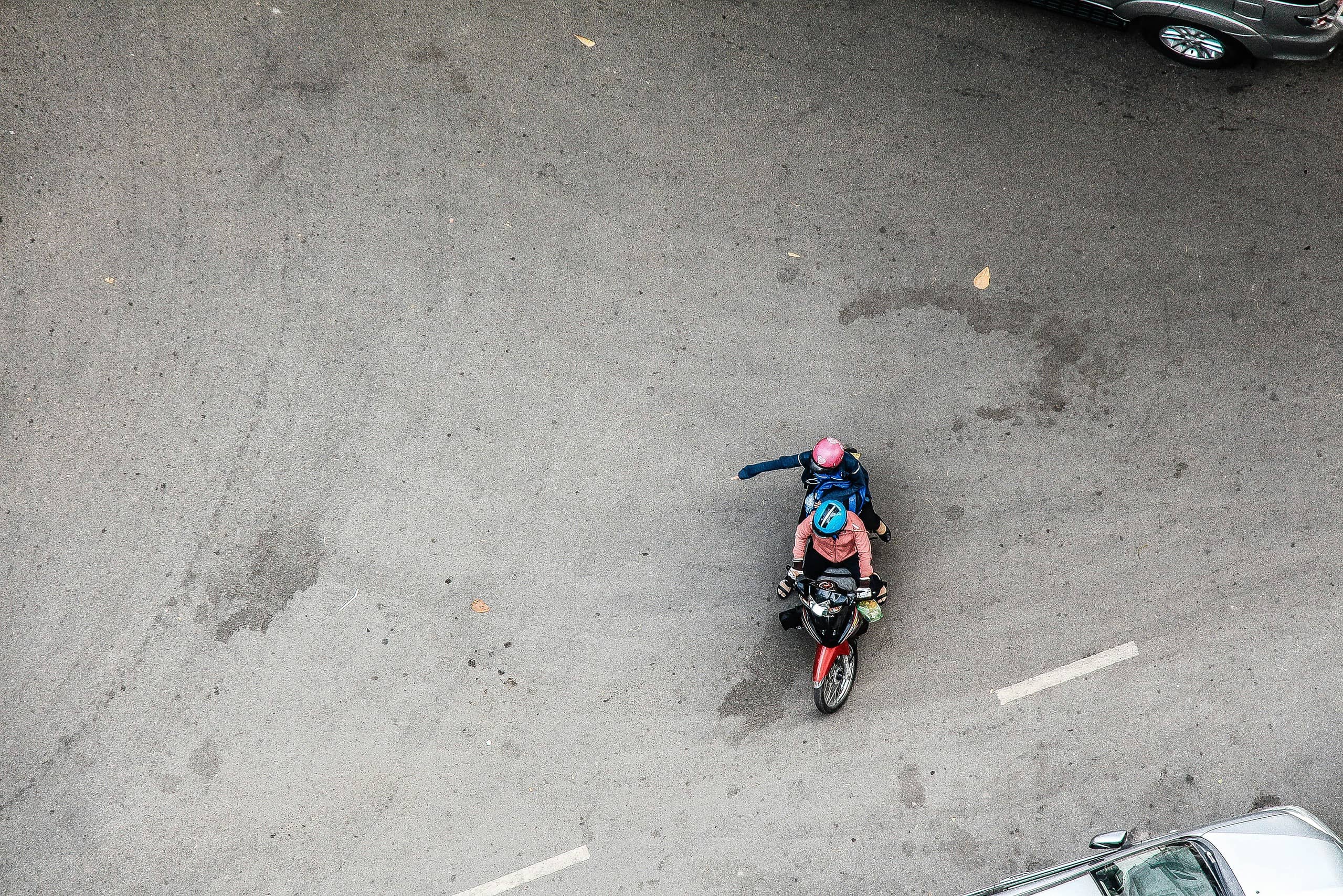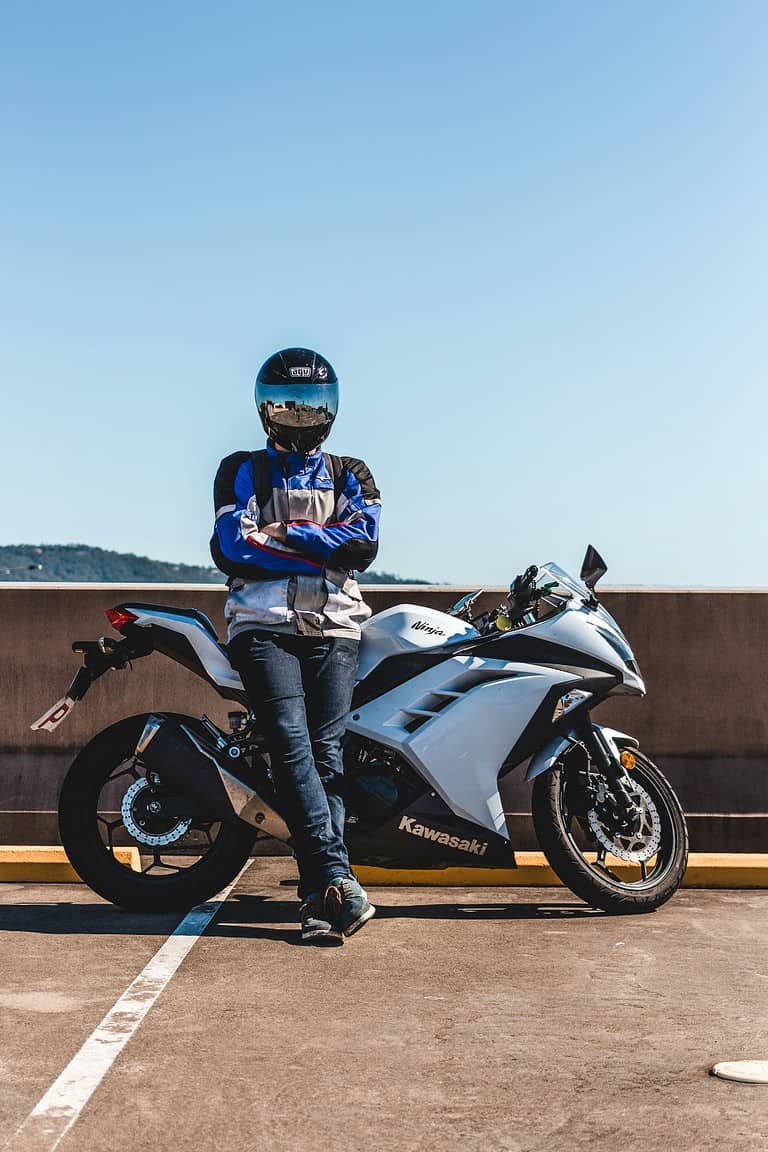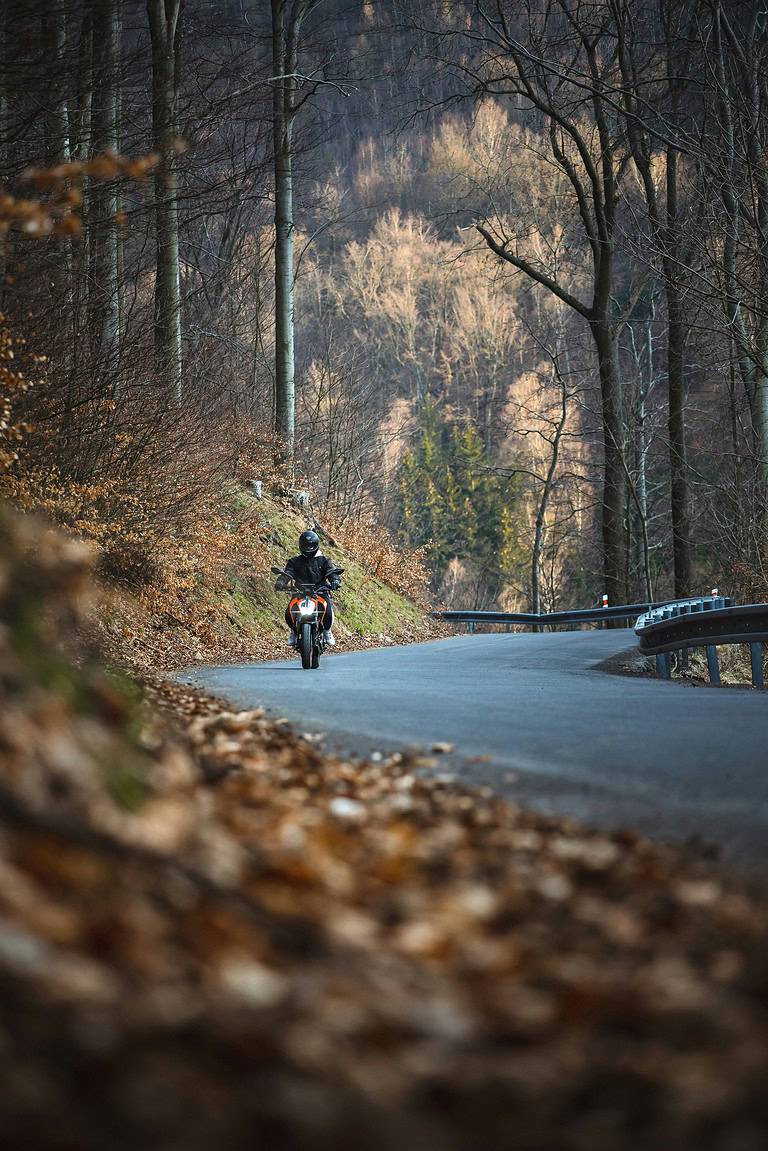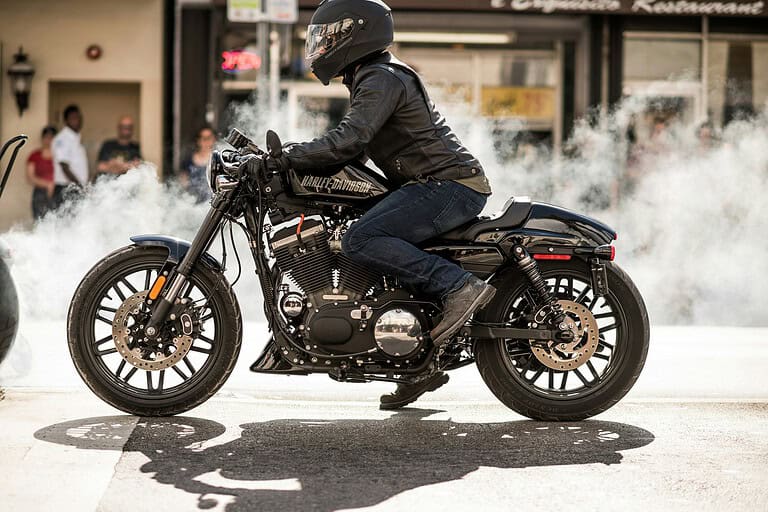What Is Counter Steering? (How Physics Keeps You Upright)
If you’re new to riding motorcycles, you have no doubt heard the concept of counter steering. Experienced riders will tell you that it will become second nature, but when described it doesn’t seem to make intuitive sense. Our goal is to get you out riding comfortably and help you develop a better understanding of not just how to do it, but why it works. We’ve included the basics and some of the physics behind counter steering in the content below, so let’s get into it!
Looking for the basic tips? Jump to the bottom now.
What is Counter Steering?
The basic premise of counter steering is deliberately pushing the left handlebar or the right handlebar in the direction that you want to steer the bike.
If you’ve ridden a bicycle before, your body probably learned to do this without even realizing it. But when it comes to most motorcycle riders, it’s often a topic of confusion.
Push Left, Go Left. Push Right, Go Right
If you take away one thing from this blog post, it’s to remember to push left if you want to go left and push right if you want to go right.
If you’re riding in a straight line and want to turn left, and you push on the left handlebar, this very initial movement will turn the front wheel briefly to the right, and nearly simultaneously initiate a leftward lean, turning the bike left.
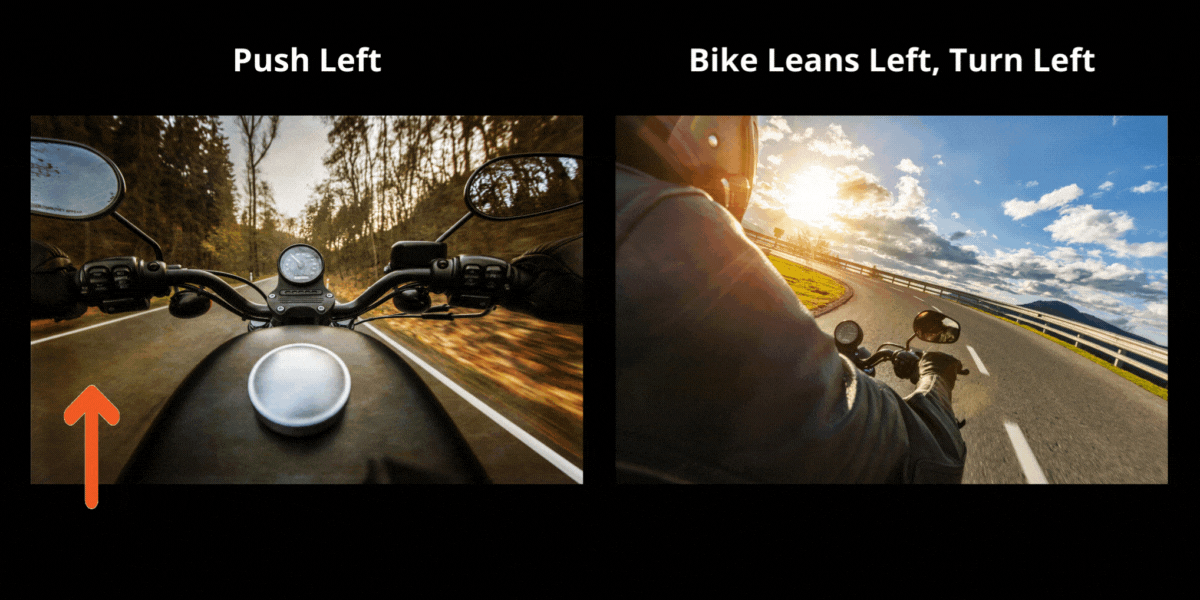
At that point all you need to do is continue in the same direction, releasing some of the pressure off the left handlebar, and the bike will continue in a stable turn.
Is Counter Steering Even Necessary?
Counter steering is an essential component to be able to begin turning. Even at lower speeds, counter steering provides the necessary movement to initiate a left turn or right turn.
So, is counter steering even necessary? Absolutely, yes!
In fact, if you try to use direct steering, the motorcycle will start falling in the opposite direction that you want to go, giving you less control overall, and eliminating your stability into the corner.
But What About Leaning?
Leaning does affect your ability to turn. And in fact, you can technically turn by just leaning: If you are riding in a straight line and take your hands off the bars, you can shift your body weight and the bike will move gently in the direction of the side with weight.
That said, a bodyweight lean is far from the most effective way to initiate a turn. You will still need to use countersteering. However, bodyweight will help you to adjust the overall balance of the motorcycle, especially at low speed.
How Does Counter Steering Work?
Putting pressure on the handlebars will essentially shift the center of gravity to one side of the bike or the other, allowing the bike to stay in a stable turn.
If you add pressure with your left hand, you will turn the handlebars slightly right before starting a left turn. The bike’s front wheel moves to the right a little bit, but the center of gravity stays in the center, essentially underneath the bike. That imbalance causes the motorcycle to fall left, and the bars will fall back to the left to continue the turn.
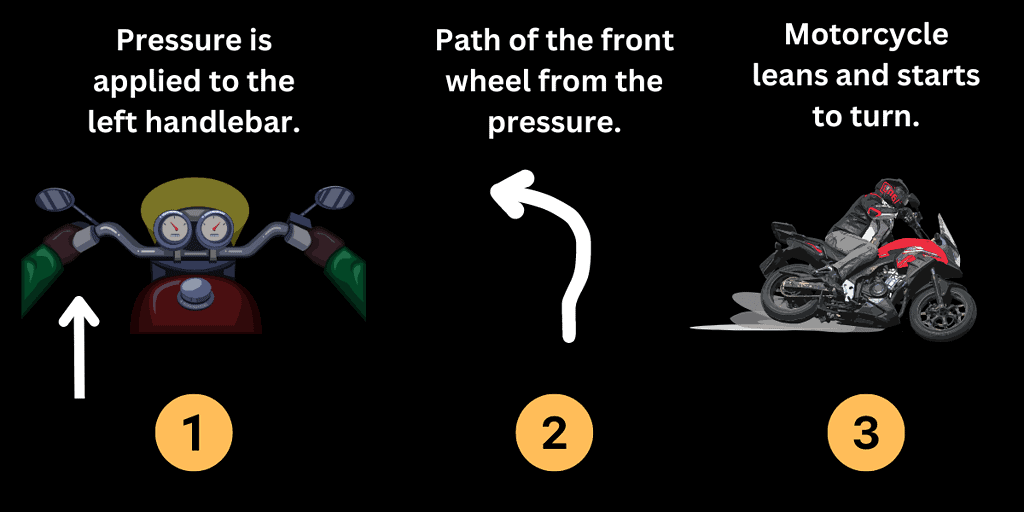
Similarly, if you add pressure with your right hand, you will turn the handlebars slightly to the left before starting to turn right. The bike moves to the front wheel to the left a little bit, but the center of gravity stays beneath the bike, causing the motorcycle to fall to the right and start turning right.
If you want to get more into the weeds on the topic, check out the in-depth physics analysis below.
When Should You Counter Steer?
The short answer is, that you should counter steer all the time!
There are really only a few situations when counter steering doesn’t have be used:
When you’re moving the bike around while not sitting on the bike, you can steer the bars directly in a given direction. If you’re maneuvering the bike around your garage, counter steering won’t have nearly the same effect.
The other scenario is when reversing. Because this is such a controlled movement where any sort of lean is essentially absent, deliberately countersteering would not steer the bike in the direction that you want to go.
Both of these situations work from a physics standpoint because you’re removing the lean that is required make counter steering effective.
How to Practice Counter Steering on a Motorcycle
When we were first learning how to ride, we used to take the bikes to a parking lot specifically to practice counter steering. There were a few goals: breaking the habit of target fixating while riding, and also drilling home the need to push harder on the handlebars to get the bike to learn further if the turn needed to be tighter. No one wants to go careening off the side of a curve…
A great way to practice this transition back and forth is to set up a line of cones to weave back and forth between. This will help you develop as a rider, building muscle memory about how much force to use on the bars, and what speed you need to travel at to successfully turn.
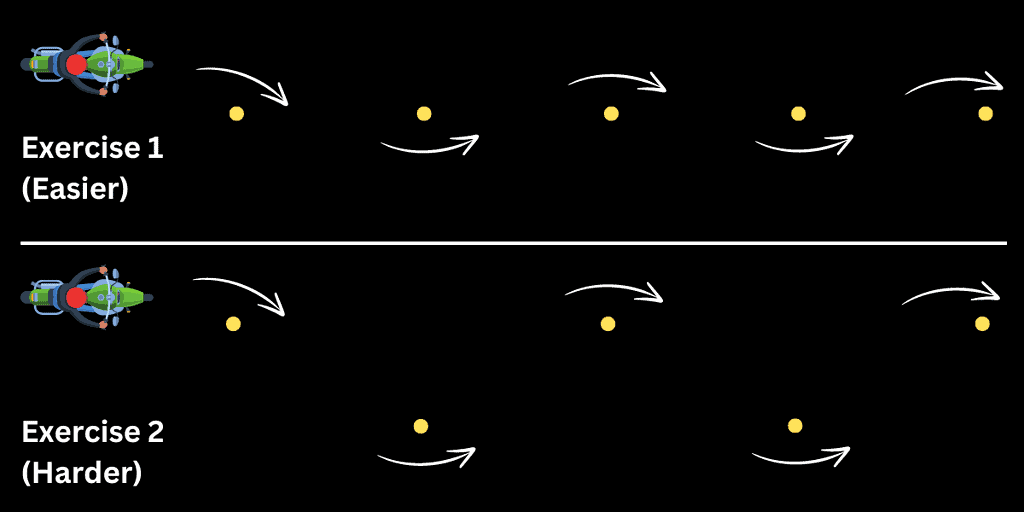
Once you’re comfortable with the cones in a straight line, try moving the cones farther apart and swerve deeper and faster. The goal here is to build muscle memory to the point where you don’t even think about it anymore.
The Physics Behind Counter Steering
When you enter a turn, there are two main forces at play. The first is gravity, which is pulling you straight down. The second is centrifugal force, which pushes you laterally toward the outside of the turn. This aligns with Newton’s first law of physics, which says that objects in motion will continue moving in motion in a straight line unless another force is acted upon it.
These forces could be anything from friction with the road, to wind resistance, to you as the rider choosing a new direction to turn. Pushing on the handlebar is the initiating force that causes a change in stability, and consequently a change in direction.
As you press the handlebar and the motorcycle leans, the center of gravity shifts, staying beneath you, and keeping you upright due to the lateral centrifugal force and the corresponding frictional force of each tire against the road.
When you’re coming out of the turn, all you have to do is relax the force of your lower hand (the one closer to the apex of the turn), and begin to accelerate and press on the upper hand (the one further to the outside of the turn) to return the bike to upright.
Gyroscopic Effects on a Motorcycle
Motorcycles have three components that create a gyroscopic effect: the two wheels beneath you, and the crank. All three of these components spin in parallel with a straight direction of travel when the motorcycle is moving.
This means that when the rider turns, the motorcycle wants to continue to move forward in one direction. The components want to stay vertical. The faster you’re moving, and the faster these components are moving, the more your motorcycle will want to continue in that same direction while upright.
Starting Your Turn
At lower speeds, the harder you initially push on the handlebars, the quicker and tighter the turn will be executed. That hard push will result in you leaning more, and moving your front wheel out from underneath you more quickly.
Once you have the lean angle you want, gently release the pressure so that the bike will stay on the same steering axis throughout the corner.
If during the corner you need to turn tighter, you can reintroduce force with your lower hand, which will lean the bike further and you’ll be riding in a tighter turn.
It’s worth noting: At very low speeds, you may need to counterbalance on your seat, since there is a lot less centrifugal force at low speed, and you’re more susceptible to gravity.
Finishing Your Turn
As you approach the apex of the turn and can begin to see the exit, place pressure on your outer hand and accelerate with the throttle to reduce the lean and stand the bike back up.
The additional speed will result in more centrifugal force that helps reduce the effects of downward force keeping the lean stable, and return you and your bike to an upright position.
The Effect of Speed on Counter Steering
The faster you move, the more pressure it takes to steer into a lean. The rider has more forward momentum, and therefore each wheel and the engine has a more influential gyroscopic effect that keeps you upright.
You’ll have to simply go out and experience this on a ride to understand how much pressure to use, but generally speaking: At higher speeds, you will need to press harder to turn. At low speeds, you can get away with pressing more gently to get the front wheel to turn.
The Effect of Different Handlebar Styles on Counter Steering
Going back to physics, the wider your handlebars, the less force you will need to initiate a counter steer. Think of the handlebars like a lever. The further away you are from the fulcrum, the less force you will need to enact a change (i.e. steer the bike).

Therefore bikes with shorter handlebars (such that your hands are closer together) will require more force to get a turn going. It will be easier at slow speed in general, regardless of the bike, to initiate a steer and a lean with counter steering.
The difference is much more noticeable when you introduce higher speeds. Motorcycle riders who have sport bikes with clip-on handlebars can attest to the fact that at highway speeds, it takes more effort to initiate a lean.
Tips for Better and Smoother Steering
- Keep your hands and arms relaxed, and squeeze the tank with your legs. Straight arms will reduce your ability to adjust your inputs.
- Use the force of your push inputs to dictate the lean angle: More push = more lean.
- Use progressive force to get the bike to lean, which will keep the motion smooth.
- Remember that once the bike is balanced in a lean, it requires another opposite force to bring it out of the lean.
- Slow down and brake before the turn, and accelerate out (this will help the bike initially fall over and stand back up). It will take practice to get corner speeds right!
- Braking in the turn will cause the bike to stand up – this is why you want to brake before!
- If you go too fast into a turn – push MORE on the inside hand to lean the bike further and steer a tighter turn.
- Don’t look at the ground in front of you; look through the curve and to the exit, in the direction where you want to travel.

